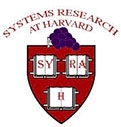3.5 Intercontinental Latency Distributions
   |
While the Azureus data set is clearly of low dimensionality, a more concrete way to examine the ``flatness'' of this large-scale network is to look at its intercontinental latency distribution. In a way, it is surprising that embedding latencies found on a globe (the Earth) into a Euclidean space works at all. If messages could be routed in any direction of the Earth's surface, using a Euclidean metric would be a poor choice. Previous work on spherical coordinates, however, found they had significantly larger error than Euclidean ones [9]. Anecdotal evidence suggested that the main reason why the Internet embeds into a low dimensional Euclidean space is because the world is flat: traffic between Asia and Europe flows through North America [9].
An examination of our Azureus data set confirms that this traffic flow is indeed the case. We mapped the IP addresses in the data set to countries through their autonomous system record and, in turn, mapped these countries to continents. As Figure 5 illustrates, no messages from Asia to Europe were faster than those from Asia to North America; the same holds in the other direction. All paths between Asia and Europe appear to travel in a line across two oceans. This trend continues until the speed of the connection to ISPs or other coarse delays begin to dominate.
This flatness suggests why hyperbolic coordinates [28] also work well: North America maps to the center of the hyperbolic space. Indeed, research comparing these two methods found neither a Euclidean nor a hyperbolic metric dominates in all cases [19]. Thus, because the distribution of latencies is ``flat'' - at least at a high level - using a Euclidean metric is sufficient. In the future, new direct transmission lines between Europe and Asia may change the Internet's shape, perhaps driving a shift to spherical coordinates.
Jonathan Ledlie 2007-02-23